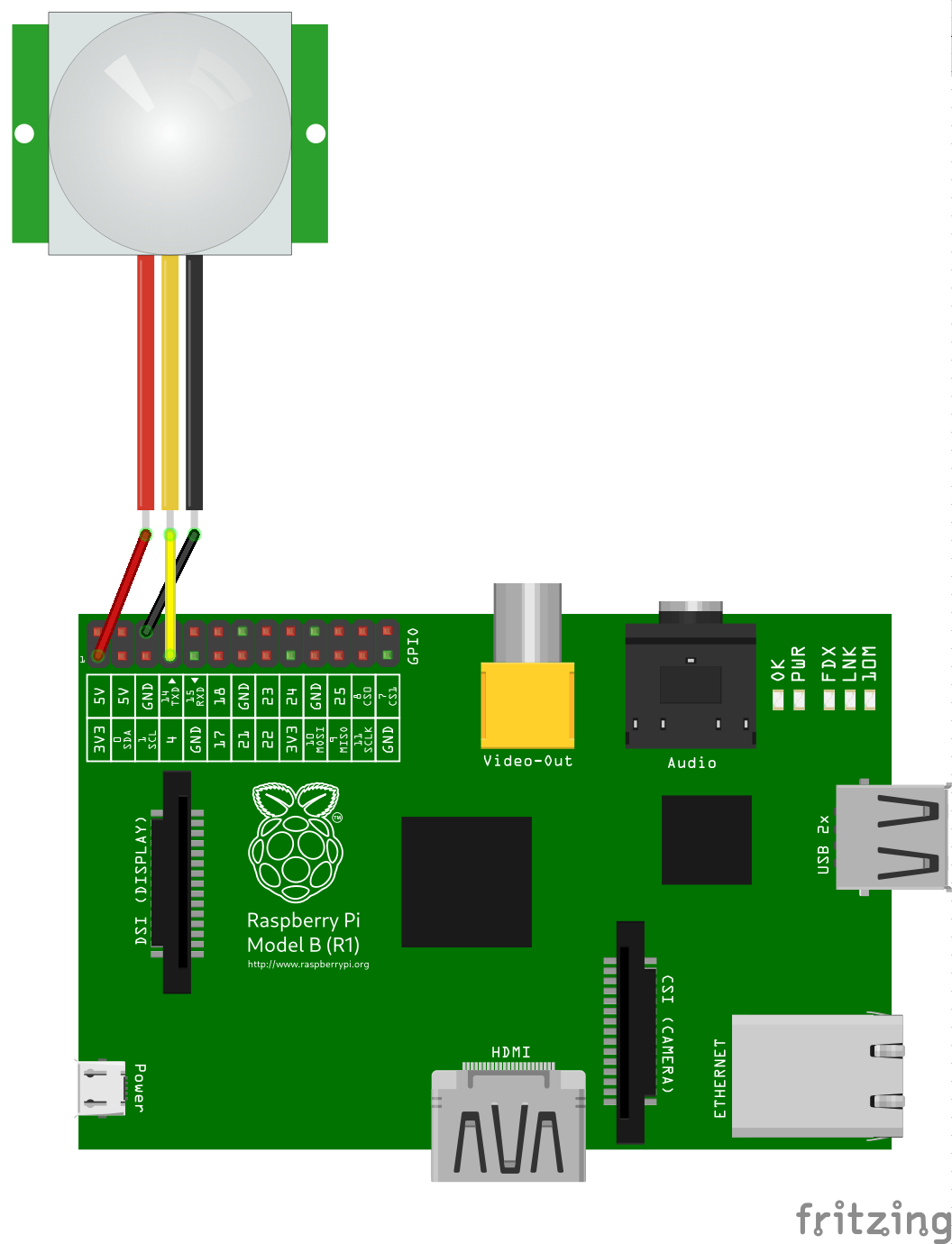RPi.PIR
PIR sensor state monitor, completely written in Python.
RPi.PIR is using PIR sensor with Raspberry Pi GPIO.
To connect to Raspberry Pi plug PIR into GPIO PIN 23 (Physical pin 16)
and POWER PIN. Install and execute raspi-pir and it should work. Alternatively you can user different PIN and execute
raspi-pir with parameter: raspi-pir --pin pin_number.
RPi.PIR supports number of parameters and also configuration file. For more details see raspi-pir --help or sample
config.
Sensor is based on RPi.Sensor library, which make base for implementing different types of sensors in Python.
Pre-Installation requirements
Update system and install required dependencies:
sudo apt-get update
Update system and install required dependencies:
sudo apt-get install build-essential python3-dev python3-pip
Installation
Install the latest released version using pip:
pip install https://github.com/ricco386/RPi.PIR/zipball/master
Alternatively install latest released version from pypi:
pip install --upgrade RPi.PIR
Integration as a systemd service
Make sure all dependencies (listed below) are installed (done automatically when installing via pip)
The
raspi-pircommand should be installed somewhere in yourPATH(done automatically when installing via pip), make sure raspi-pir.service has corect path in ExecStart set to raspi-pir executable.Systemd scripts are available: https://github.com/ricco386/RPi.PIR/tree/master/init.d to install them you will need root privileges, so we execute them as sudo:
sudo cp init.d/raspi-pir.conf /etc/tmpfiles.d/ sudo cp init.d/raspi-pir.service /etc/systemd/system/ sudo systemd-tmpfiles --create /etc/tmpfiles.d/raspi-pir.conf sudo systemctl enable raspi-pir.service # Enable service to start at system boot sudo systemctl start raspi-pir.service # Start
Systemd scripts should be run under default Raspberry Pi user (pi), scripts have to be able access GPIO.
Dependencies:
- RPi.Sensor (0.5.3+)
Usage
You have to create a .sensor.cfg file and place into /home/pi/.sensor.cfg you can find example file in RPi.Sensor repo: https://github.com/ricco386/RPi.Sensor/blob/master/raspi_sensor/sensor.cfg.example and create section [PIR] where you can override default values.
raspi-pir also support parameters to overwrite config parameters. For more info run:
raspi-pir --help
Zabbix support
In directory zabbix_template there is a Zabbix template that can be imported to Zabbix and monitor systemd process if it is running and how much memory it consumes. It also supports Zabbix trapper rpi.pir-state that can receive a sensor state changes.
License
For more information see the LICENSE file.
